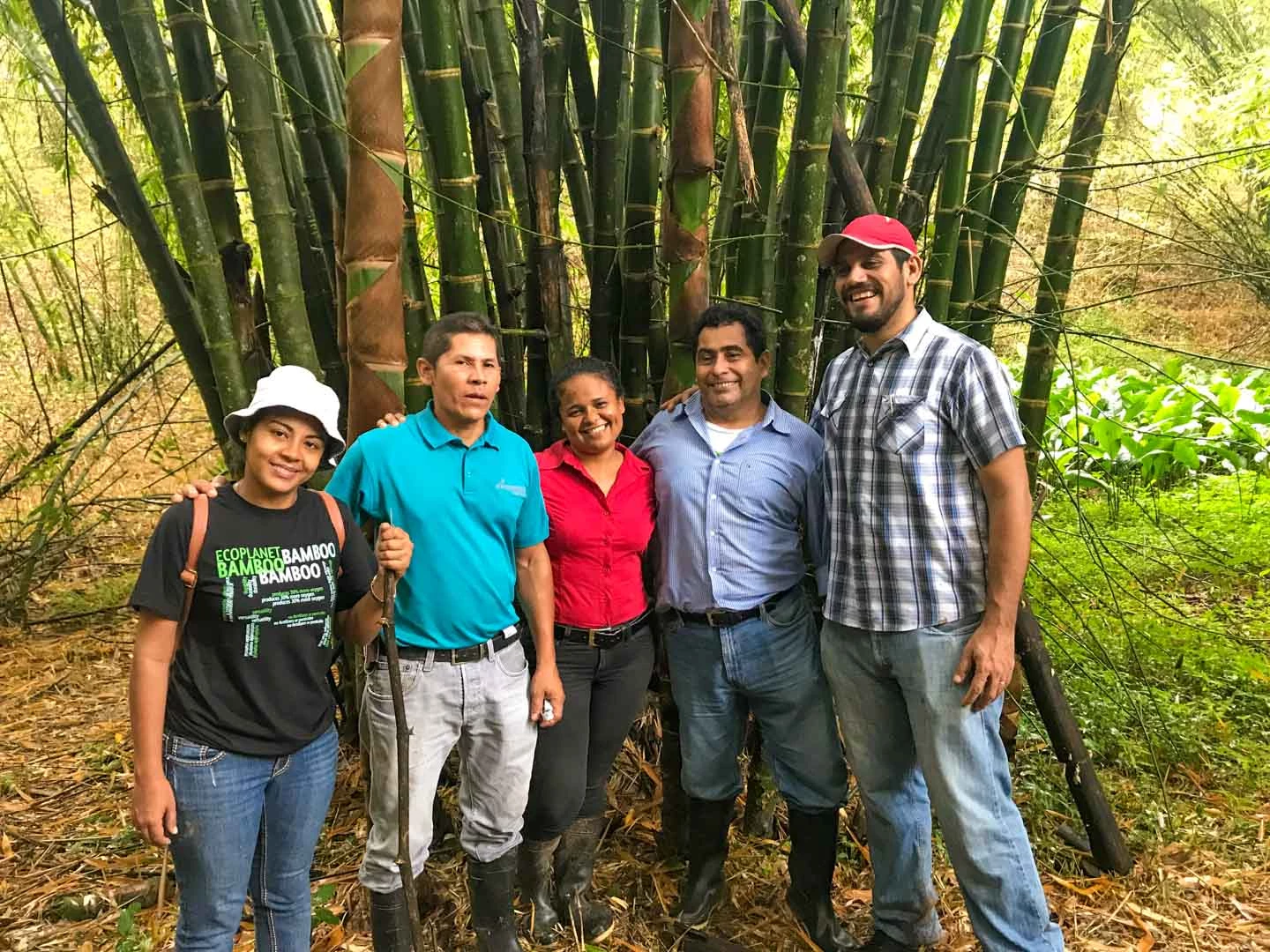Bamboo for deforestation-free products
This project in eastern Nicaragua has planted more than 1 million plants of a native species of giant clumping bamboo, covering 2,361 hectares while protecting an additional 1,000 hectares of old forest as a conservation zone. It has transformed a degraded landscape into a flourishing and biodiverse ecosystem. Bamboo is one of the most efficient biological tools for fighting climate change. The project contributes to mitigation by preventing deforestation and capturing CO2 as well as to adaptation by reducing temperatures, creating micro-climates, supporting a low-carbon economy, and creating livelihoods for vulnerable communities.
In contrast to cutting trees, harvesting giant clumping bamboo does not kill the plant. Once fully mature, selective poles are harvested from each bamboo clump annually, leaving enough time for other poles to regenerate. Thus the carbon stored within the bamboo becomes a permanent sink, with the bamboo clumps having a lifetime of 80 years. The bamboo fiber from the plantations forms the base for a broad range of sustainable, deforestation-free products like fibers or building materials.
How does afforestation help fight global warming?
Forests are not only among the planet's most important carbon reservoirs. They also are home to an enormous diversity of species and are the livelihood for all people. However, global forest areas have declined sharply in recent decades due to increasing settlement, agricultural use, illegal logging, and mining.
The afforestation of new or reforestation of degraded areas is an important contribution to increasing the biosphere's carbon storage capacity. Afforestation takes place in different ways. Sustainable forestry is able to absorb large quantities of carbon due to the use of fast-growing species. Other projects aim at providing shade and soil improvement in agroforestry. The storage capacity of afforestation areas depends on the type of tree and the geographical location. New forests create habitats for animal and plant species and opportunities for local people.




